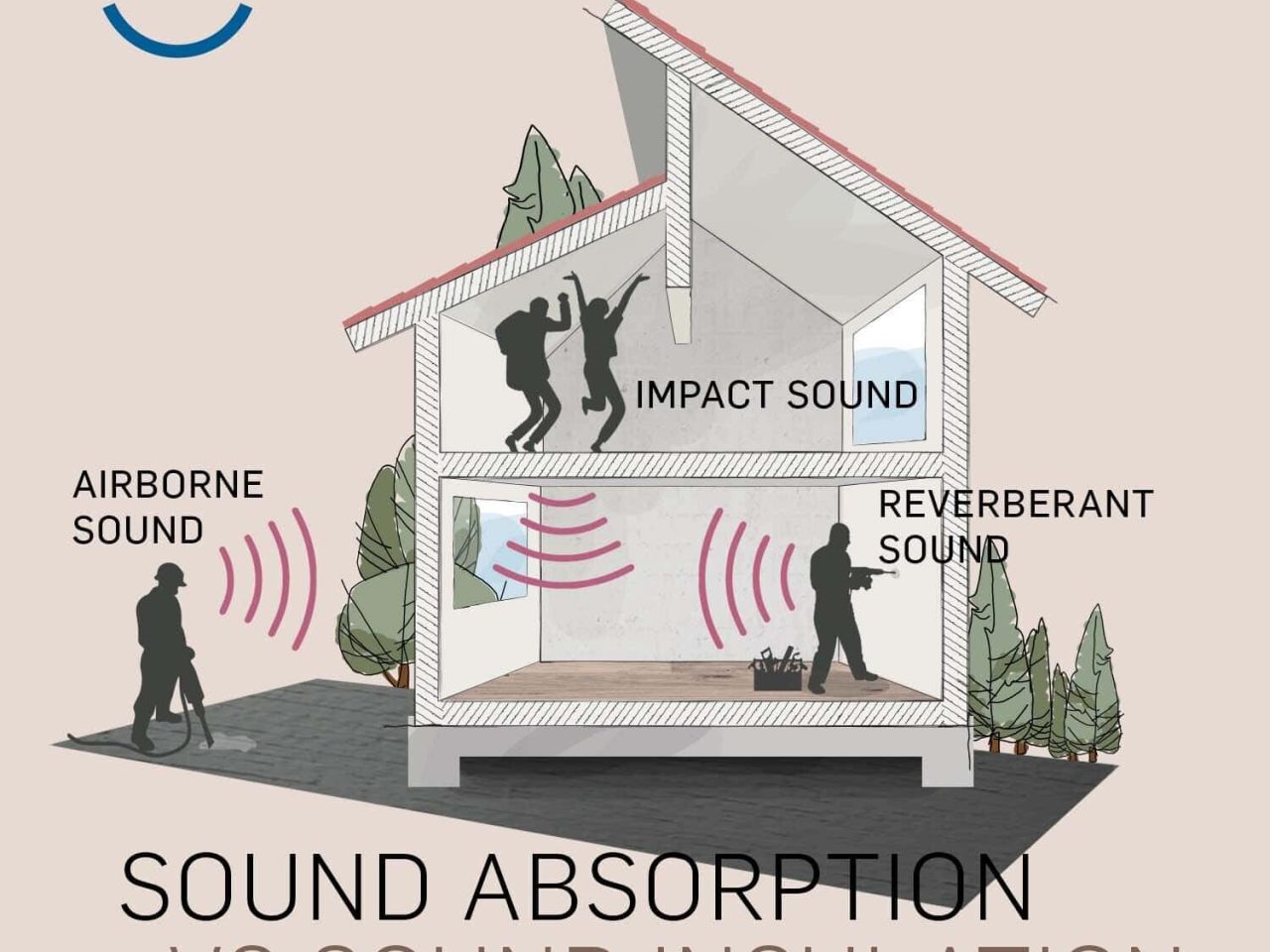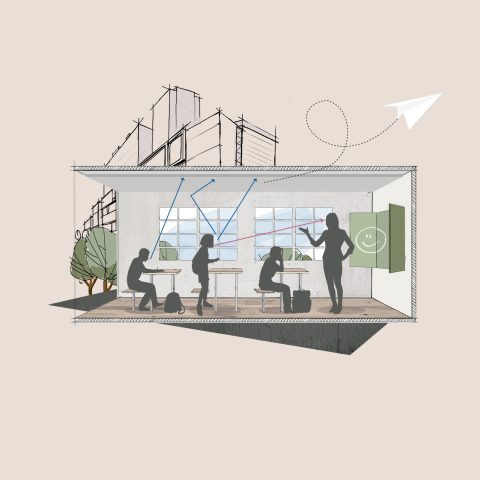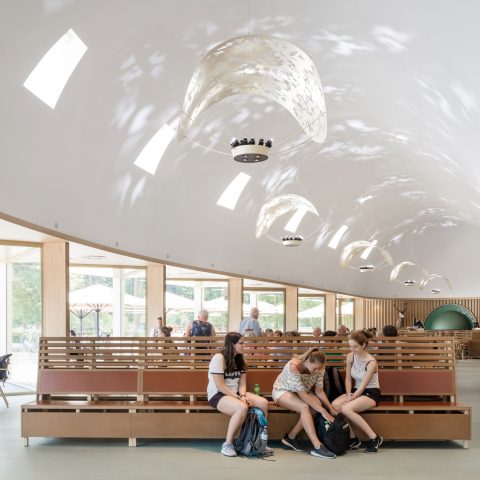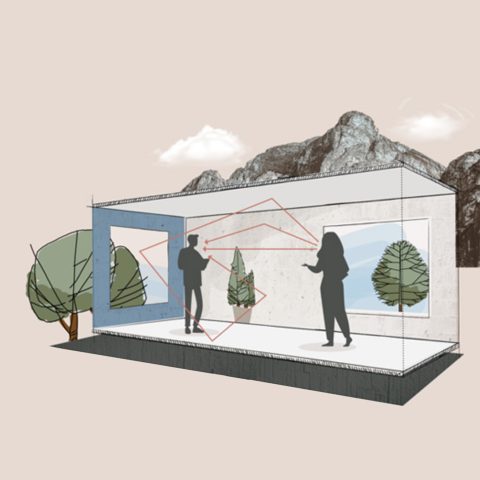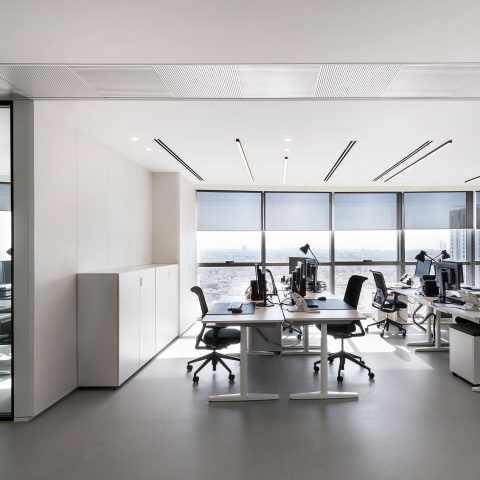When does sound become noise?
When the structure of sound has a disturbing, stressful or harmful effect on the environment, we speak of noise. Usually, the trigger for humans to perceive a sound as annoying noise is its volume.
Whether a sound is perceived as noise depends largely on how the listener perceives and evaluates the sound source. Noise can disrupt the day/night cycle, impair concentration and cause sleep disturbance. Even if repeated exposure to noise leads to an acoustic habituation effect, noise can still have a subconsciously harmful effect on the body and mind.
Direct sound
Direct sound is the sound that reaches the listener’s ear first in an enclosed space, i.e. directly, without any reflections in between. Ambient or diffuse sound follows an indirect path. It is created by reflections or deflections and only then reaches the listener’s ear.
Direct sound allows our ears to determine the source of the sound, i.e. the direction. Ambient sound, on the other hand, contributes significantly to the audibility of a room. Audibility is a general term used to describe the acoustic properties of a room for speech or musical performance at the listener’s position.
For example, if the time difference between the direct sound and the arrival of the first reflection is 30 ms, the listener will have the impression of a large room. If the direct sound is dominant and the room sound is very small, the sound source is close.
Types of sound
When a solid medium, such as a wall, is excited by sound waves, it is called structure-borne sound. When a gaseous medium, such as air, is excited, this is called airborne sound. Structure-borne and airborne sound merge at the body surfaces that form the boundary between the body and the air. Airborne sound becomes structure-borne sound and vice versa. Structure-borne sound travels at a speed of about 330 m/s, much faster than airborne sound, and in concrete at 10 times the speed of airborne sound at 3,400 m/s.
What is structure-borne sound?
Structure-borne sound in a wall, floor or other solid body can be generated in a number of ways:
- Direct structure-borne sound is generated by the direct application of force to the solid, such as when drilling with a percussion drill. Impact sound is generated by the same principle. This is structure-borne noise generated when walking on a floor or stairs.
- Indirect structure-borne sound is generated by the transformation of a loud airborne sound source. Parts of the airborne sound cause the body itself to vibrate. For example, a very loud stereo system can cause structure-borne sound vibrations in a wall.
We cannot hear structure-borne sound itself, but we can feel it: the bass runs of a very loud techno song cause vibrations in our bodies that we can feel. For the human ear to perceive structure-borne sound, it must first be converted back into airborne sound at the surface of the body. For example, music played too loudly can travel through the wall into the flat next door.
The mere vibrations of structure-borne sound in solid objects can also become a stress factor. The enormous vibrations of passing trains, for example, cause the surrounding ground to vibrate right into the walls of neighbouring houses. This can be very annoying for residents.
How can structure-borne noise be measured?
Structure-borne sound is measured using a structure-borne sound transducer. This is an acoustic transducer that generates an analogue electrical signal from the mechanical vibration quantity. The electrically amplified and frequency-weighted signal is displayed on a measuring instrument.
Acoustic emission measurements are mainly carried out on the vibrating surface. Vibration displacement, vibration velocity and vibration acceleration are the main parameters recorded during the measurement.
How can structure-borne noise be reduced?
Long wave, low frequency sound waves have high energy. In comparison, high frequency sound waves have much less energy. Good insulation is characterised by a significant reduction in long wave, high energy sound waves such as a bass boom. One approach to achieving this is to reduce the structure-borne sound itself. Sound decoupling of building components also plays an important role in preventing the propagation of structure-borne sound. Another approach is to limit the propagation of airborne sound. Three-dimensional surfaces, as opposed to large, flat surfaces, break up sound, deflect it and distribute it throughout the room. Acoustic elements and furnishings such as shelving, small pieces of furniture, room dividers or special absorbing surfaces have a positive effect here.
What is airborne sound?
Airborne sound is the sound that travels from a sound source through the air in the form of sound waves. The human ear can perceive sound in the frequency range 20 – 20,000 Hz.
How can airborne noise be measured?
To quantify noise exposure, it is necessary to be able to measure airborne sound and loudness. Loudness measurements are usually made in decibels (dB) and determine the sound pressure level. The scale starts at 0 dB, which is the threshold of hearing. The threshold of hearing is reached at about 140 dB. However, a meaningful sound measurement includes not only the sound pressure level, but also, for example, the frequencies, duration, sound characteristics, intensity and noticeable features. A variety of sound level meters are commercially available.
For example, high tones with a sound pressure of 80 dB are perceived by the human ear as louder than low tones. The so-called weighted sound level dB (A) takes this into account and filters out some of the sound energy in the low-frequency vibrations. Increasing or decreasing the sound level by 10 dB is perceived by the human ear as doubling or halving the loudness because it is a logarithmic measure.
How can airborne noise be reduced?
Sound absorption reduces airborne sound and occurs on surfaces. The amount of absorption varies greatly depending on the sound frequency, texture and material. Hard and smooth surfaces tend to have low absorption compared to soft surfaces. These hard surfaces are more likely to cause reflections. The aim of sound reduction is to absorb as much vibration energy as possible. This is the case, for example, with freely vibrating and hollow panels, which have an absorbing effect despite their hard surfaces. Otherwise, building components must usually be heavy and solid to achieve the desired result. A wall made of heavy materials such as clay bricks, sand-lime bricks or concrete is therefore often acoustically superior to a wall made of lighter materials. However, special construction features must always be taken into account. In order to achieve better sound insulation with lightweight materials, it is also common to build a facing, which is essentially a second, sound-decoupled wall. In partition walls, even the smallest joints and holes must be avoided so as not to undermine the sound insulation of the solid wall.
Acoustic elements for sound insulation are divided into absorber classes A to E according to their degree of absorption. Class A, with the highest sound absorption coefficient between 0.9 and 1.0, is suitable for high sound reduction. Class E, with a sound absorption coefficient between 0.15 and 0.25, is at the lower end of the range.
What is the difference between airborne sound and structure-borne sound?
The main difference between airborne and structure-borne sound is the medium of propagation. While airborne sound travels through the air as sound waves, structure-borne sound travels through solid objects such as stone, concrete, steel or wood. Impact sound and noise from building services equipment are classified as structure-borne sound and are generated by direct acoustic excitation of the building component. Structure-borne sound is converted into airborne sound at the surface of the body and is therefore audible.
BASWA’s acoustic solutions are acoustic support panels with acoustic plaster made of fine marble sand. The special feature of Acoustic Solutions is their jointless design, which can be smoothly curved, coloured or thermally activated. They are completely discreet and can be seamlessly integrated into the existing architecture. A thermally activated version, for example, makes it possible to combine a thermo-active component system with an acoustically effective ceiling.
